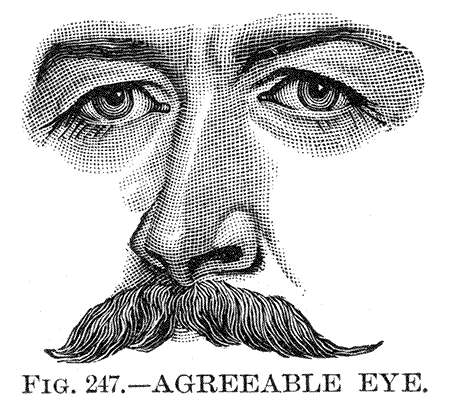September 2016
none intrudes
3 September 2016, around 10.26.
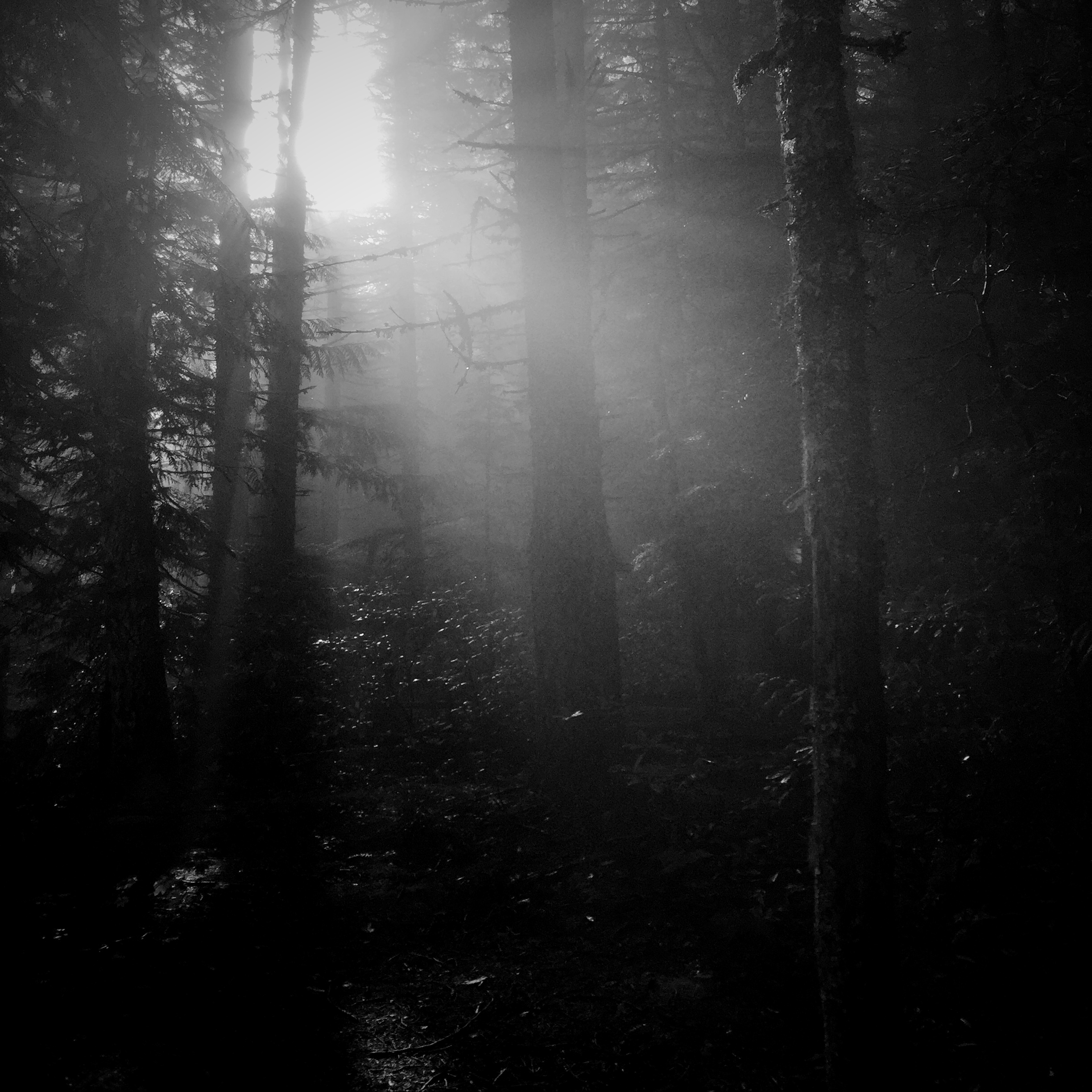
up to nature
4 September 2016, around 6.02.

Ordinarily, I go to the woods alone, with not a single friend, for they are all smilers and talkers and therefore unsuitable. [ . . . ] If you have ever gone to the woods with me, I must love you very much.
We creep slowly along the paths through the woods, usually to some arbitrary – but hopefully picturesque – destination. Sometimes it is simply a private milestone with nothing to show that it was the point where last time we were too exhausted to continue, though now we are fresh and spritely and well able to go on.
We get up early to go on these walks, to avoid people. We always do see people – these are well established paths, of course – but rising early reduces them to individuals rather than crowds: the cheerful young woman with the cheerful old dog; the father and son who do not get along; the middle-aged man no longer able to hike as far or as quickly as he used to; the young woman with an immense walking staff who scowls at the world and everything in it; the old woman who woke earlier than we did and seems as much a part of the woods as the squirrels.
We ventured on a new path the other day – a shorter, easier, more popular path – and encountered a different set of people. Family groups, mostly, small knots of friends: all with fresher, less weary faces. They are not objectionable. The wilderness expert, the experienced hiker with a careful knapsack of emergency supplies, who shepherds his inexperienced, hapless charges with rigor and eyes each person he passes as though expecting to identify them in a police lineup later – such persons are objectionable, for they spread fear and discontent in the name of enjoyment. They seem to appear in every third group or so, poor devils. 1
- It is with some relief I acknowledge to myself that I do not care for hiking. What is called hiking requires such a quantity of sunscreen, stale-smelling apparel, bad temper, and aggressive heartiness that really it comes as no surprise I do not like it: I can think of few people who would.[↩]
7 September 2016 – Paris
7 September 2016, around 19.12.
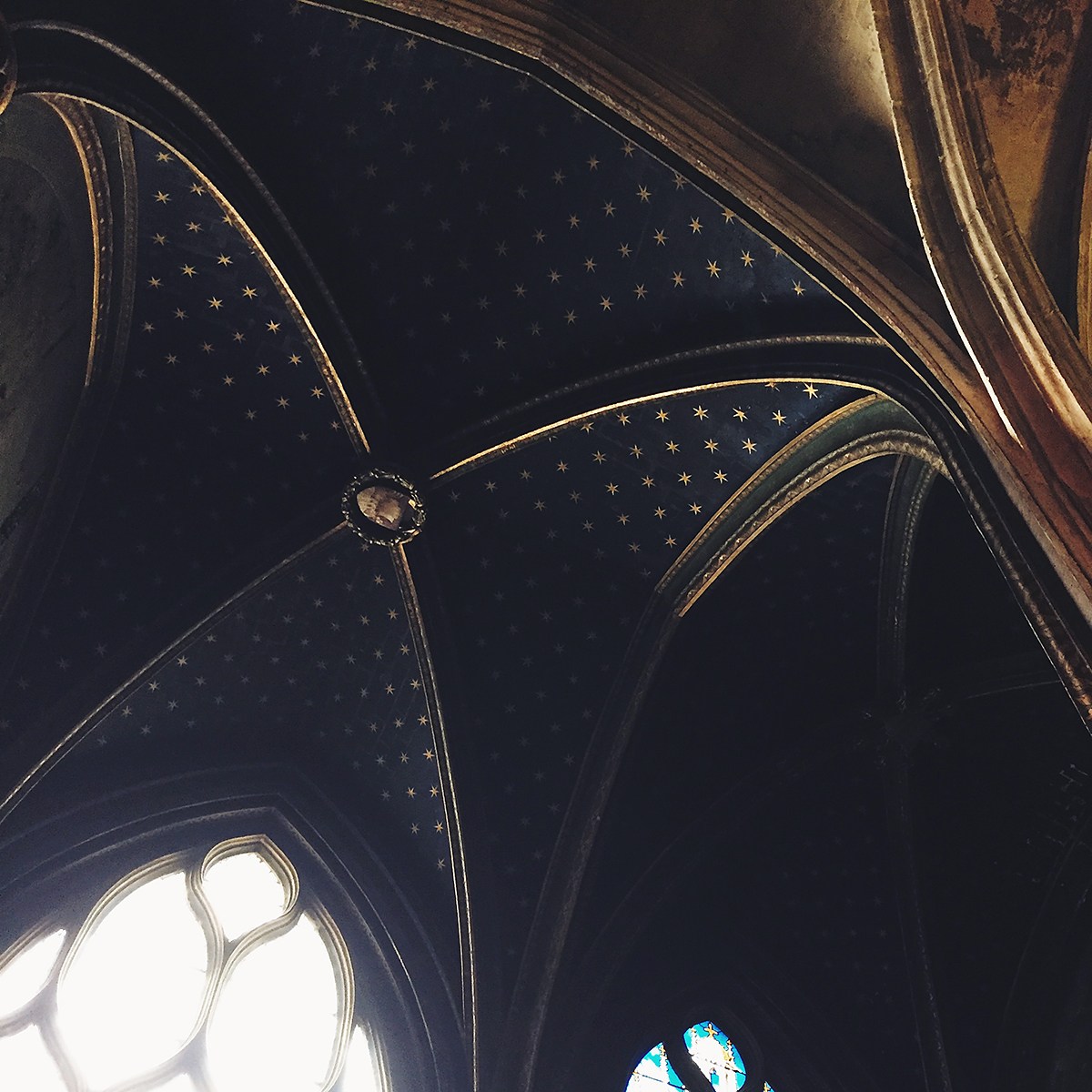
Day 1 (belated). Walked south and stopped in at the church of Saint-Séverin, built to honor a fifth century hermit. A Romanesque church was built on the site in the eleventh century, but the present structure is the accretion of centuries onto a thirteenth century building. There are some quite nice gargoyles on the outside, and some twentieth century stained glass that is less to my taste inside.
We continued up Rue Saint-Jacques and twisted round to the Jardin du Luxembourg to see the statues of vexatious women, and then got a bit lost because we were very sleepy.
8 September 2016 – Paris
8 September 2016, around 19.25.
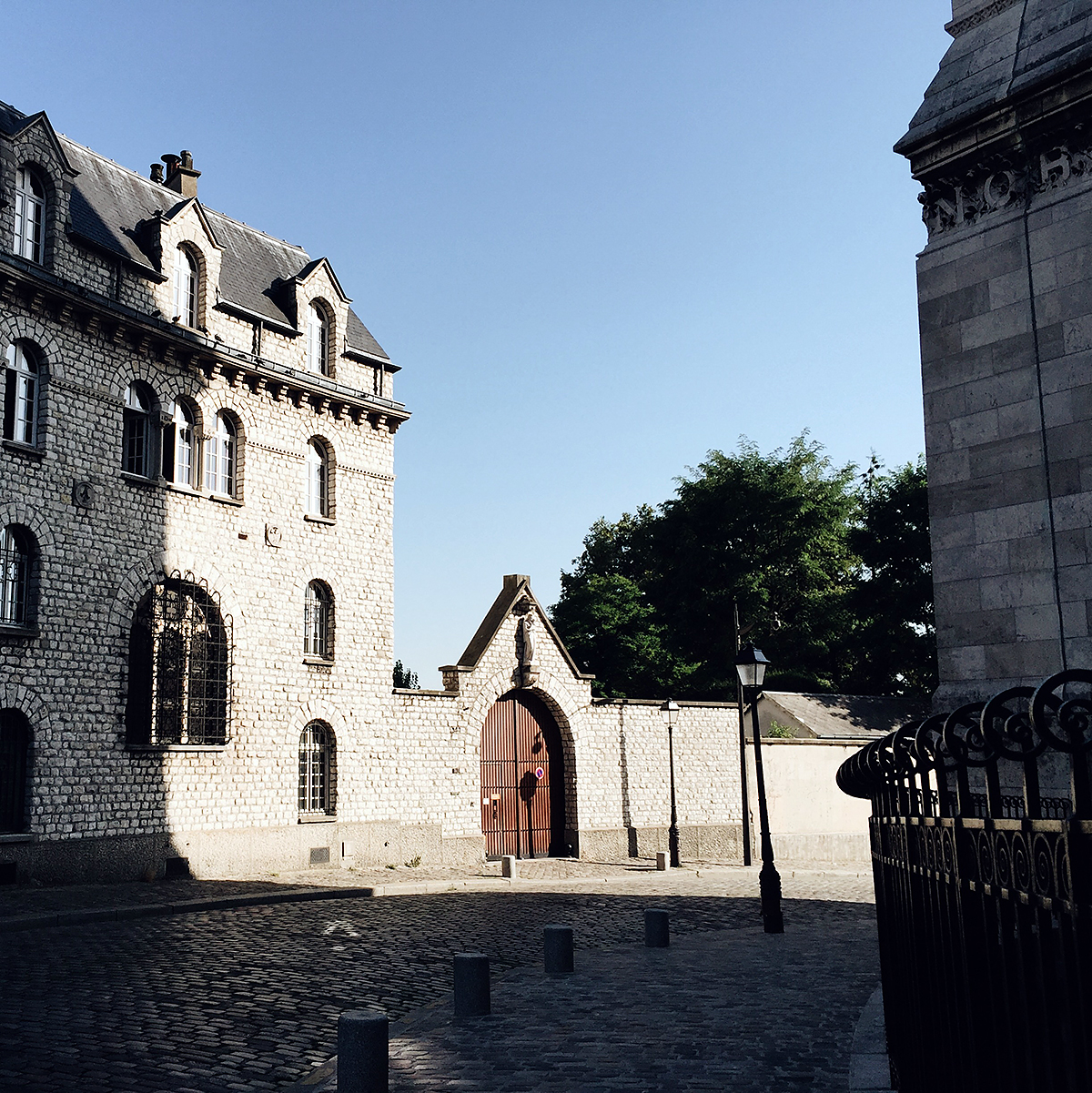
Day 2. Walked north to Sacré-Cœur, because PF wanted to see inside before the crowds arrived. The last time we were in Paris (some six years ago) we sat outside on a step reading while a constant pulse of people took nearly 45 minutes to circulate through the building. I wish there had been a crowd today. The vending machines for commemorative religious medallions (2€) induced a great feeling of irreverence, as well as a profound appreciation for the power of the bourgeois virtues (which have their place I’m sure). Also, photography was not permitted inside, which did not amuse me.
Several times on the walk back I almost lost faith in my sense of direction, but I did not lead us (very) far astray – and we needed the walk anyhow.
9 September 2016 – Paris
9 September 2016, around 19.28.
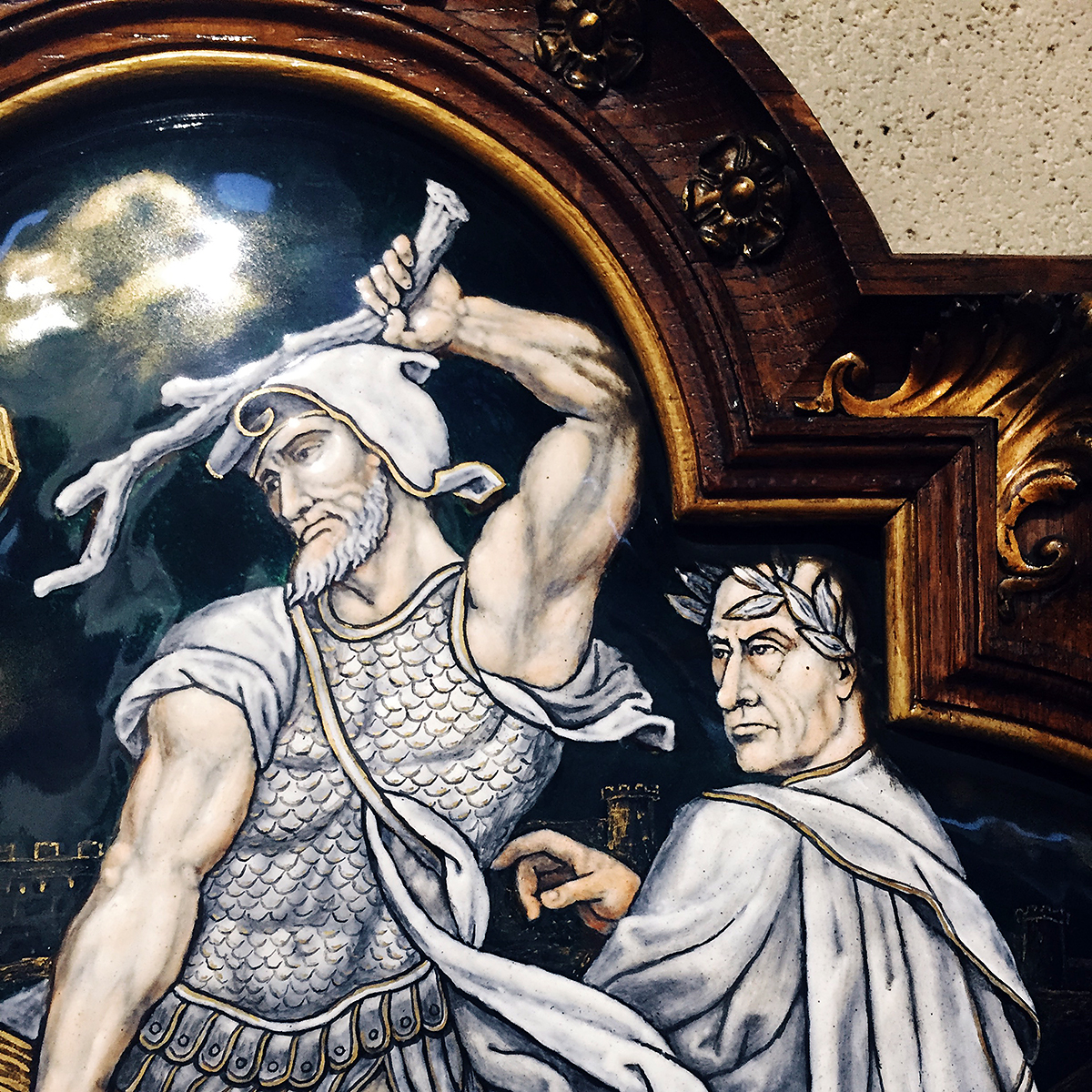
Day 3. Headed west to go to Rodin museum, but spotted the late nineteenth century church of Saint-François-Xavier and stopped to look around. It appeared a suitable, sober, appropriate 19th century church and so, indeed, it proved. The lines were bright and clean, most of the artwork tasteful if mediocre – and I will admit to being charmed by the stations of the cross, of which the photo posted here is one example. We naturally failed to notice a Tintoretto, but there was a service in progress in the rear chapel and we were concentrating on being as unobtrusive as two people who unfailingly step on the creakiest floorboards can be.
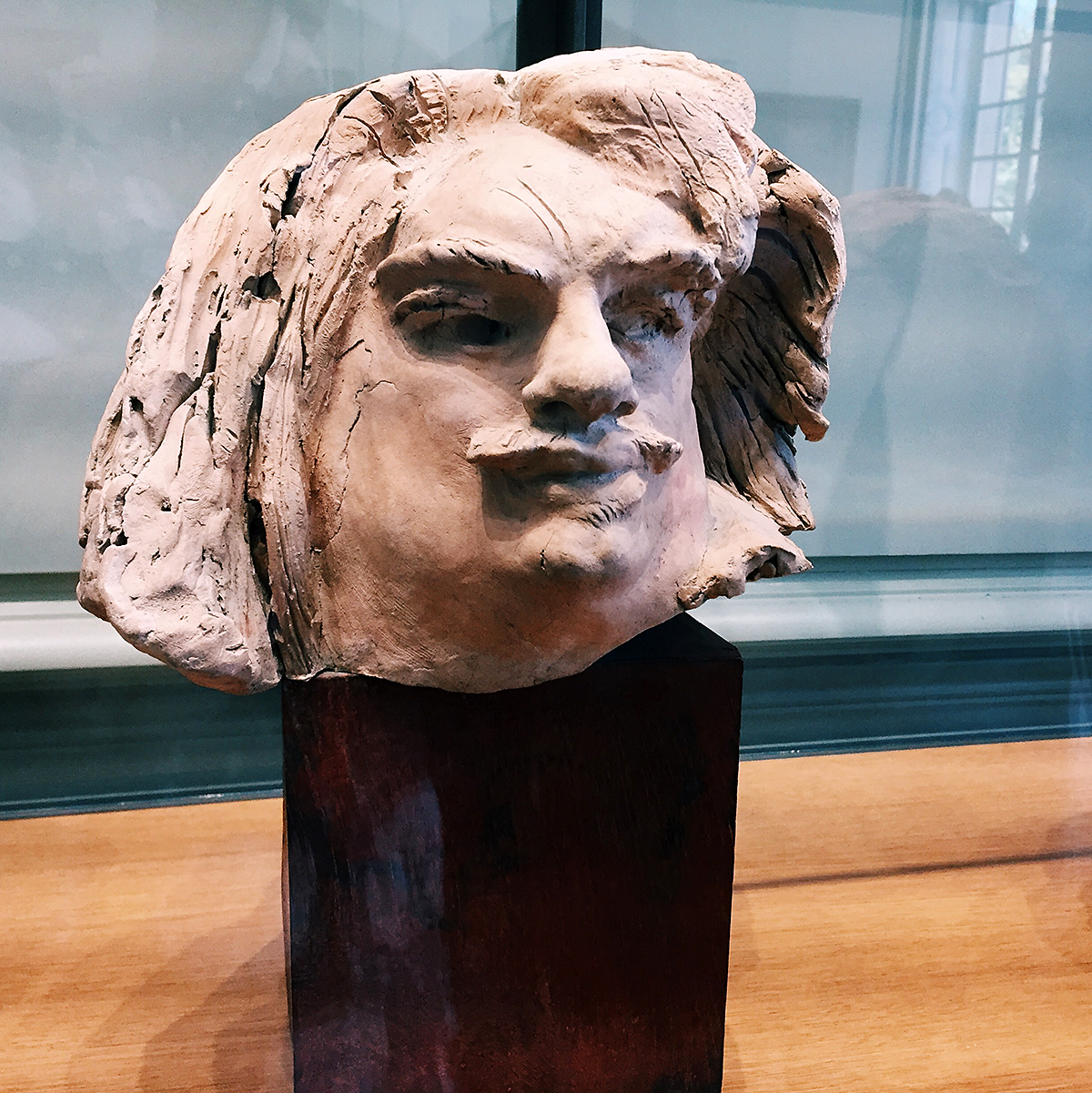
The Rodin Museum, housed inside the 18th century Hôtel Biron, which Rodin rented as a studio once it had ceased being a girls’ school (oh, the lives of buildings!) consists of an interior exhibition and a sculpture garden containing late 20th century casts of the more notable pieces. The portrait sculpture was the most pleasing – such as this study for Balzac; Mahler and Père Eymard (who appeared to share a barber with Beckett), as well as different studies of Camille Claudel were also of interest. Studies for limbs – neat rows of tiny clay legs and arms – reminded me of votive offerings in a temple to Asclepius and formed a delightful contrast with fragments of antique sculpture from Rodin’s own collection. The monumental pieces, particularly when shown outside their intended groupings, reminded me of the frescos by John Singer Sargent at the Boston Public Library – sentimental, emotional, and rather dull. The museum as a whole reminded us, unfavorably, of the Parajanov museum in Yerevan – perhaps because it was the last museum we’d visited devoted to a single artist. There, from the elephant suitcase to the hand drawn playing cards from the Gulag, everything roused curiosity about Parajanov, and made one want to learn more. Here, from the blandly hagiographic portraits of the sculptor, to the half-thought out sketches for famous sculptures, one was left with the impression that Rodin was rather a dull dog – though a great promoter of his own work.
10 September 2016 – Paris
10 September 2016, around 19.30.
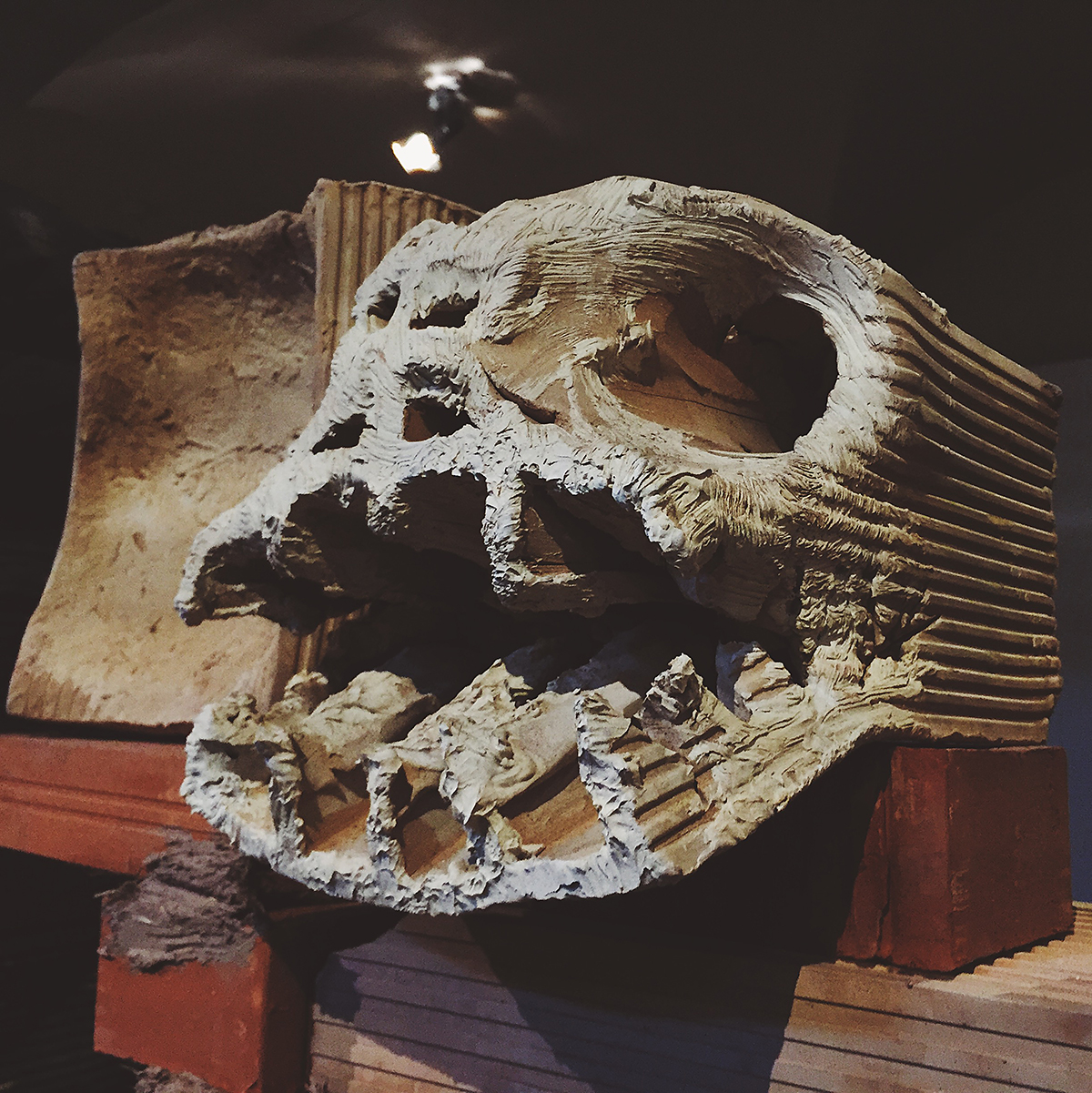
Day 4. Headed north and a bit east to the Picasso Museum – a lingering irritability about Rodin making us somewhat hesitant, especially knowing two floors of the museum are currently closed to prepare for a new exhibition. We needn’t have worried. The basement featured an exhibit by Spanish artist Miquel Barceló (one of his fragments of plaster pictured) that quite restored us to good humor; every turn brought some unexpected, slightly disorienting vista to view.
The remaining collection on show, undeservedly amplified by exclamation marks (¡Picasso!), did not surprise, though it did manage to charm – particularly the room of goats (for which, the curators assure us, the painter had a ‘predilection’).
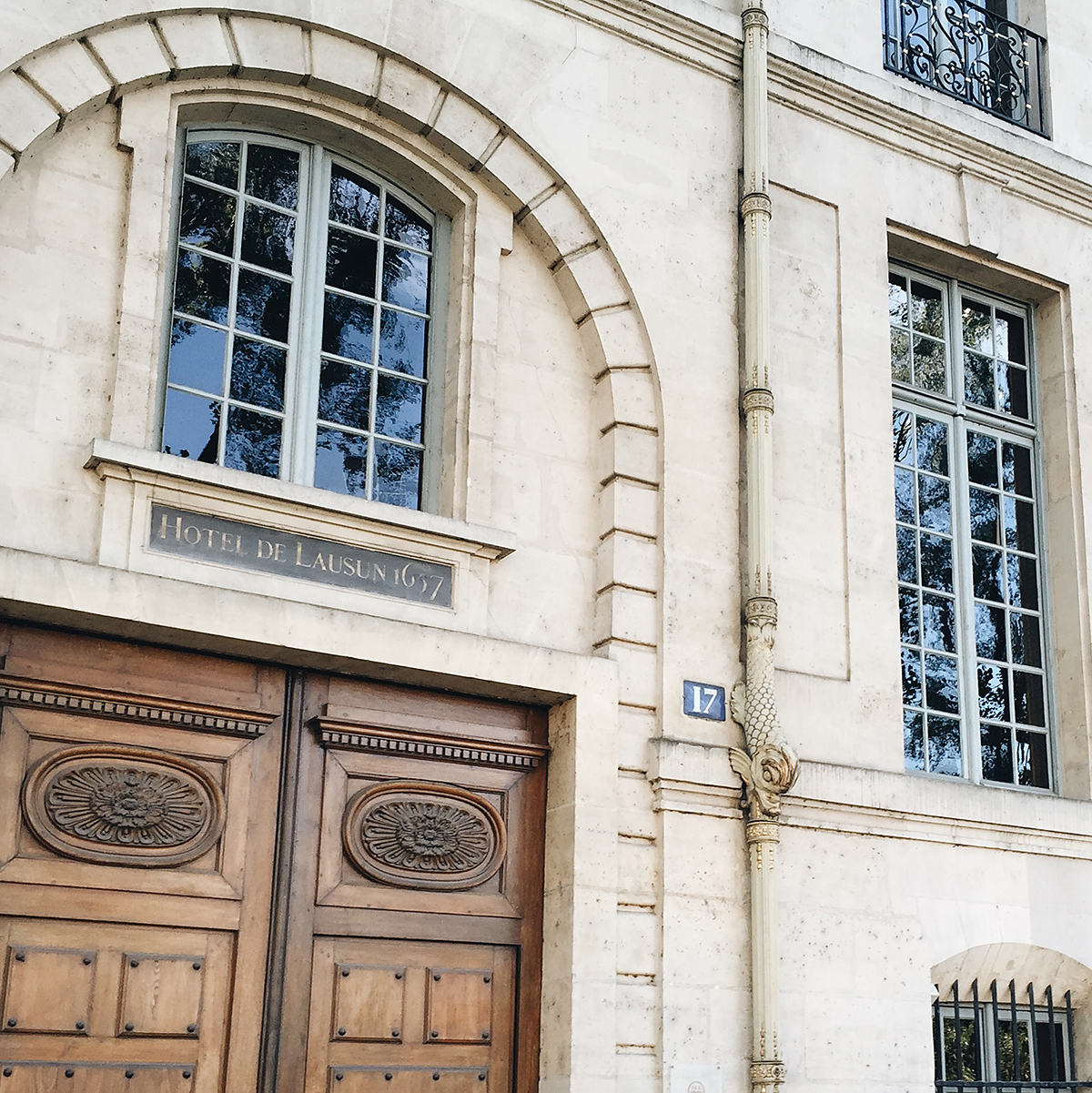
On the way to the museum, we stopped in the 15th–17th century church of St-Gervais-et-St-Protais, whose 20th century stained glass had a wholly inappropriate use of sans serif, as well as the 17th century church of Saint-Paul-Saint-Louis – which gave the unfortunate impression of being entirely tromp l’œil.
Also, remind me, when I have a 17th-century building to call my own, of these drainpipes.
11 September 2016 – Paris
11 September 2016, around 19.31.
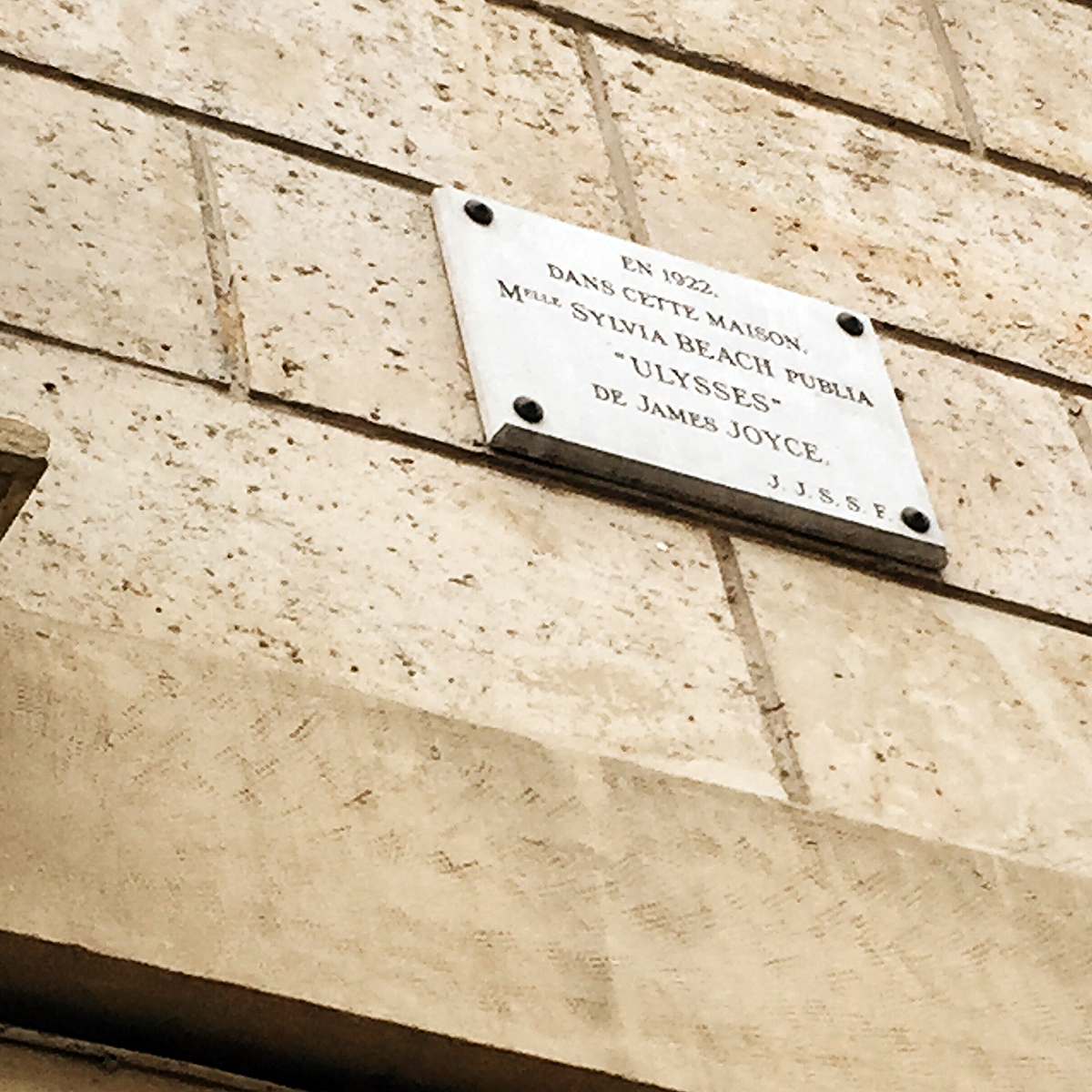
Day 5. We have reached that portion of the vacation where we are no longer disposed to be pleased by anything – though we did make the obligatory pilgrimage to 12 Rue de l’Odeon while we waited for bookstores to open. After that, there was nothing to be done but retreat to the comfort of coffee and pastries – which we had been clever enough to purchase before our mood turned sour.
12 September 2016 – Paris
12 September 2016, around 19.33.
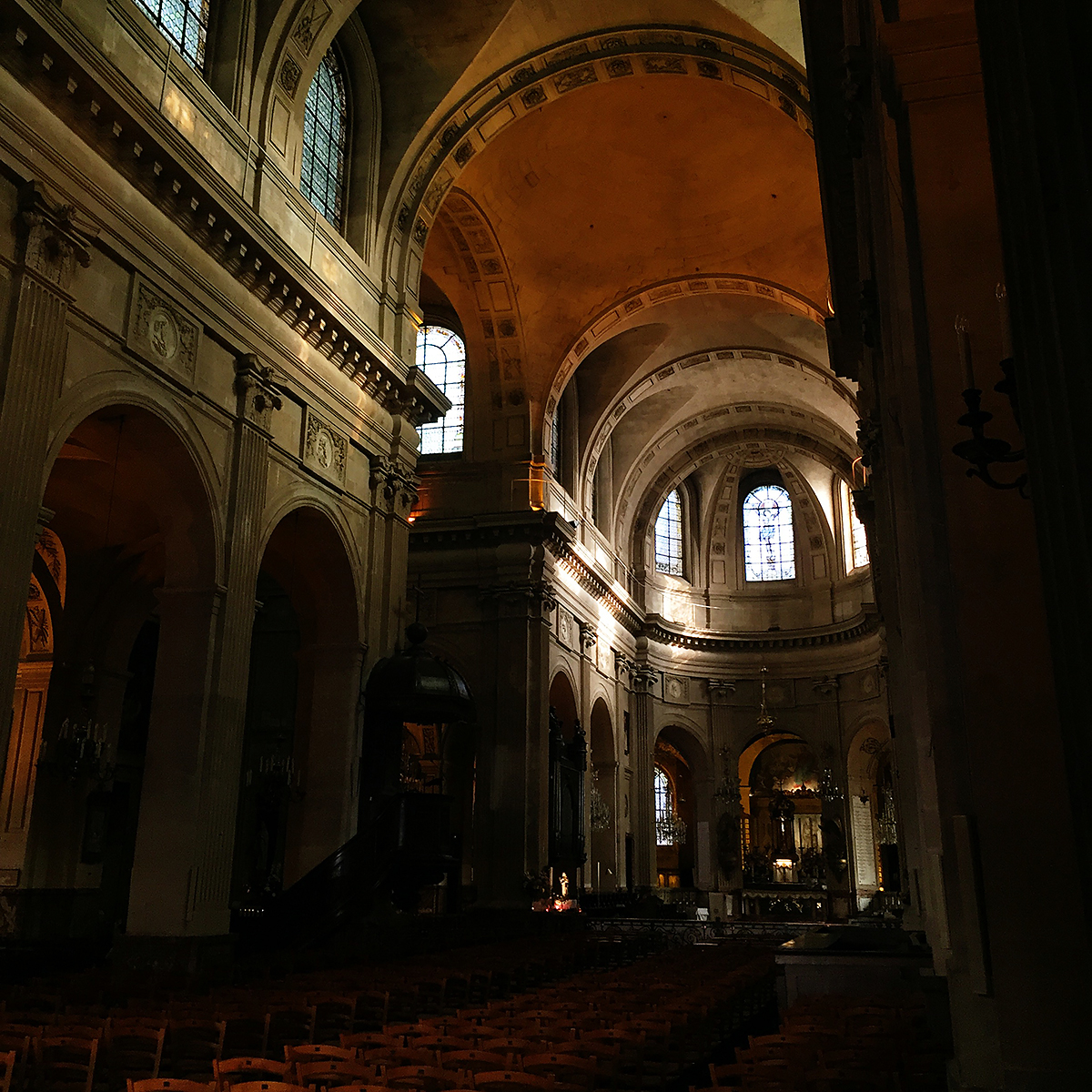
Day 6. We decided to walk east along the Blvd. Saint-Germain until we got tired or could think of a destination. We stopped in at the late 17th-century church of Saint-Nicolas du Chardonnet, which had the eeriest sense of tension about it of any church I’ve been in. A priest patrolled the aisles, and such people as were praying did so with a desperation hopefully rare for a Monday morning. I found out after the fact that the building has been occupied since 1977 by the Society of St Pius X, a schismatic sect rejecting Vatican II – which would, I suppose, account for the sense of unease.
We continued east to the botanical gardens, then headed southwesterly to Montparnasse Cemetery, where – after failing to find it six years ago – we found Beckett’s grave. Or maybe we did find it before, but forgot. In any case, we found it (again).
13 September 2016 – Paris
13 September 2016, around 19.35.
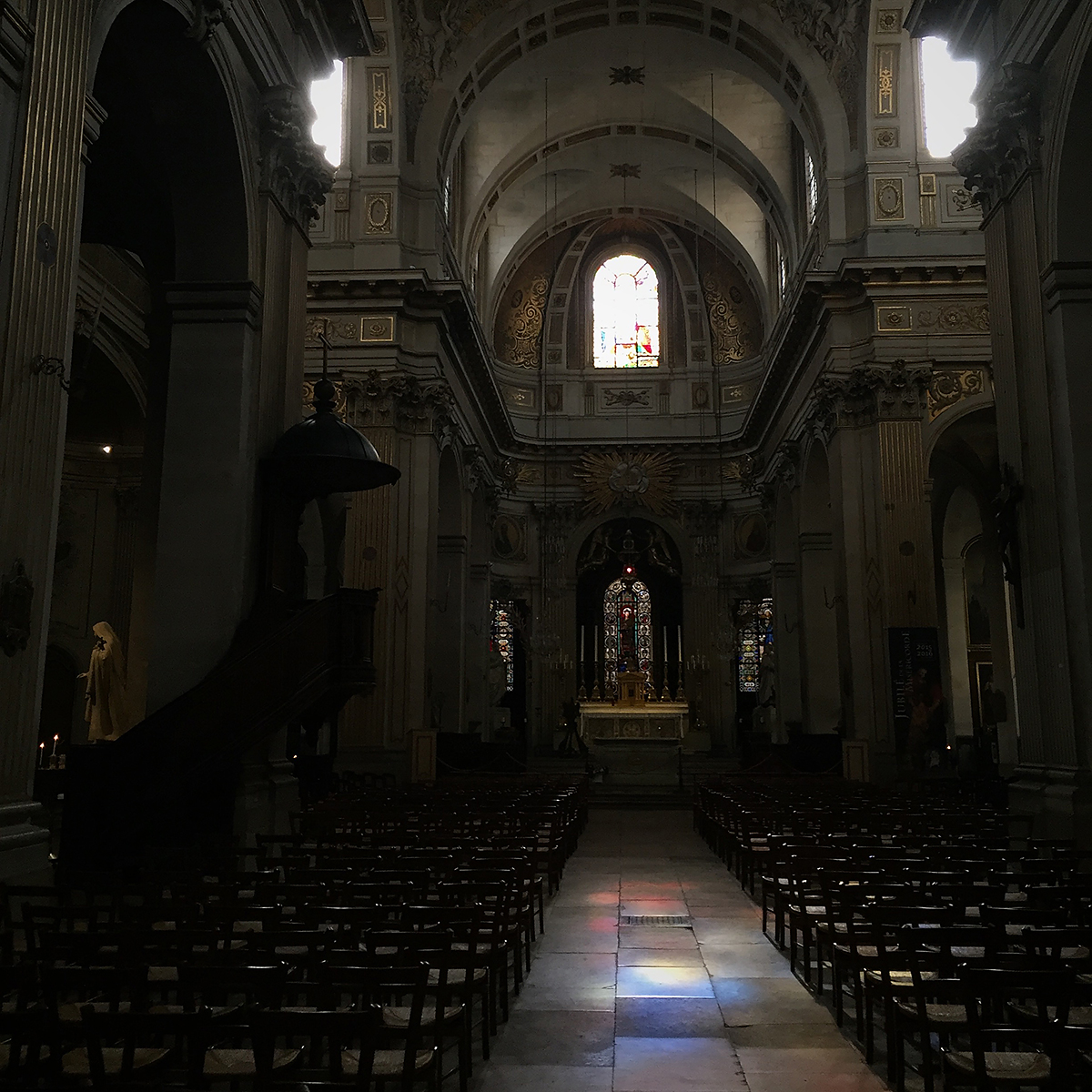
Day 7. We went to Notre Dame first, thinking to climb the towers and admire the grotesques, but at opening time the guard estimated the line was already 45 minutes long – and to the unpracticed eye it certainly looked longer. So we decided to head to Père-Lachaise Cemetery (on which more anon) via the Île-Saint-Louis. Naturally we stopped in at the 17th-century church of Saint-Louis-en-l’Île to console ourselves for missing the opportunity of waiting in line. Something we noticed here, as we noticed too in the cathedral, is the sense of the church as a house or home, shaped by its daily habits and subject to all the economies housekeeping entails. One feels the immense amount of time and attention that have gone and still will go into these buildings. And as with any home, the grandest are not always the most pleasant to visit (cf. Sacré-Cœur).
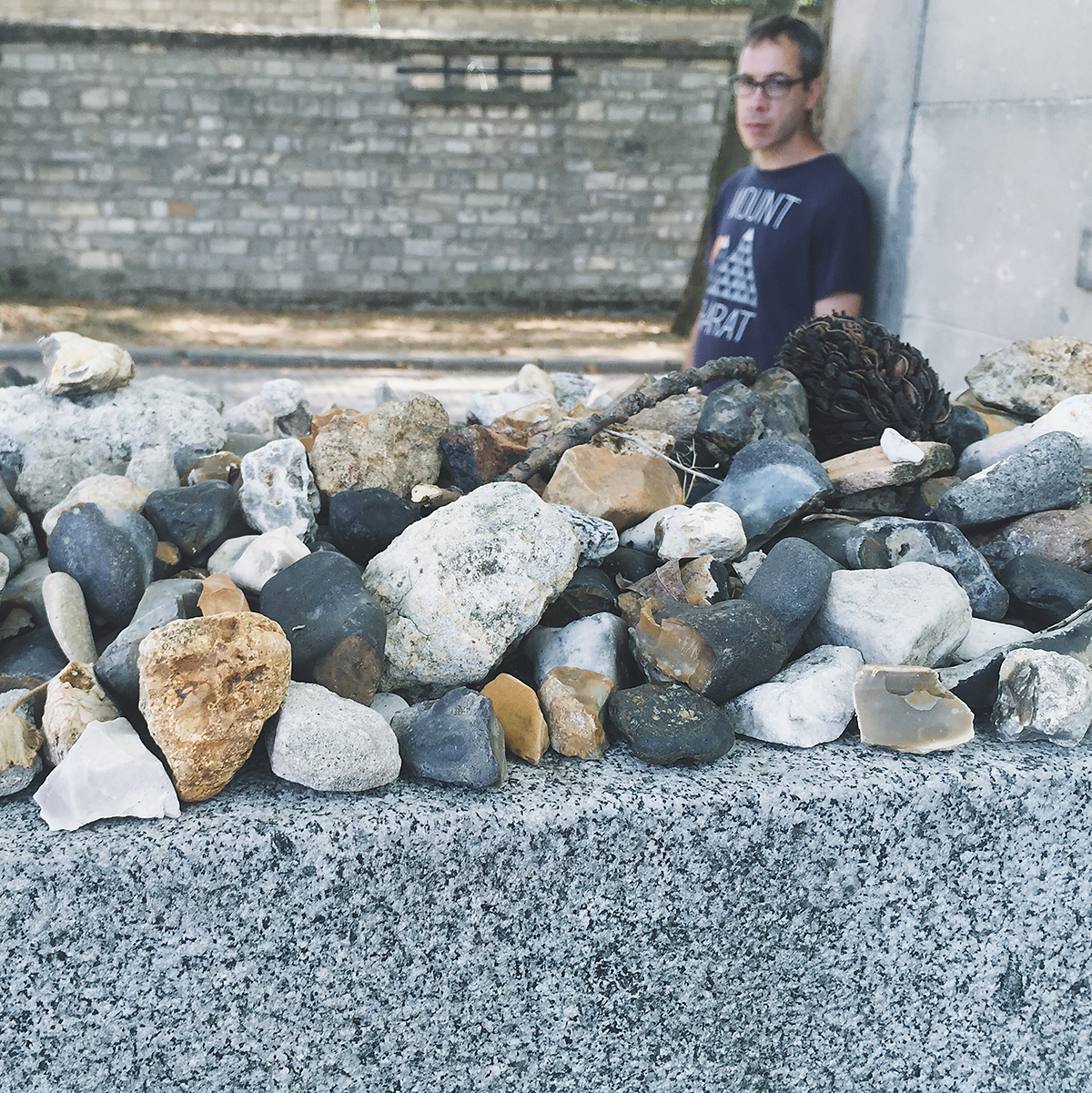
Guy reminded us about Père-Lachaise cemetery this morning. Jim Morrison, you know, and also Oscar Wilde. And also Balzac, Proust, Georges Perec, and many, many more. Tired by a longer walk then we had expected, we failed to find the grave of Molière, whose reburial in the cemetery in 1804 was a marketing ploy to get more people to buy plots. We were more successful in finding Gertrude Stein & Alice B. Toklas.
Play fairly.
Play fairly well.
A well.
As well.
As or as presently.
Let me recite what history teaches. History teaches.
14 September 2016 – Paris
14 September 2016, around 19.38.
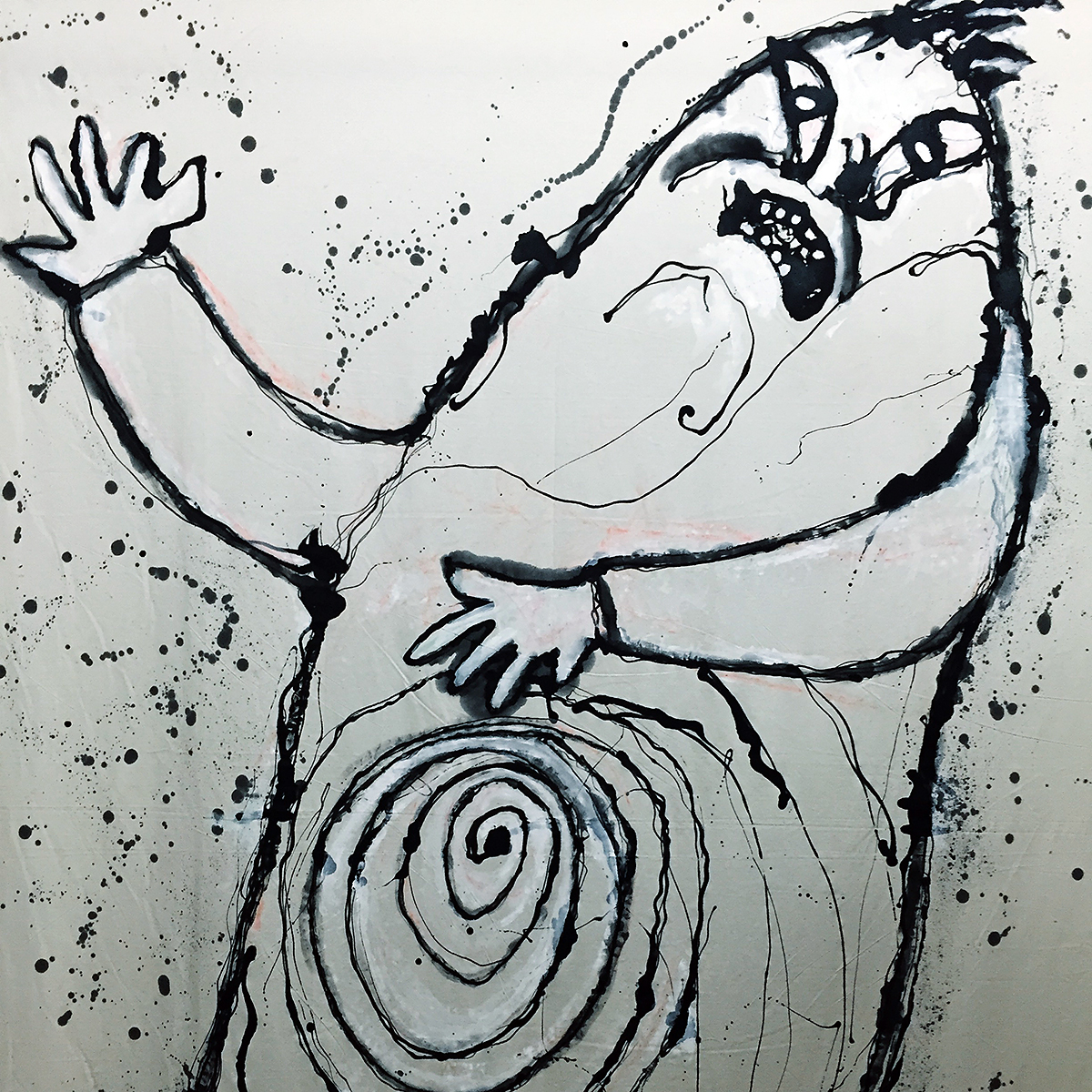
Day 8. Took the Métro to the Balzac house museum – first time not venturing out on foot for these excursions. The Maison de Balzac is in the 16th arrondissement, just across the river from that dreadful iron tower. Like most house museums, it is an odd assortment of personal belongings and contextual clues – tho’ this was more like the Charents museum in Yerevan than the Twain or Stowe houses in Hartford: memorial not mausoleum.
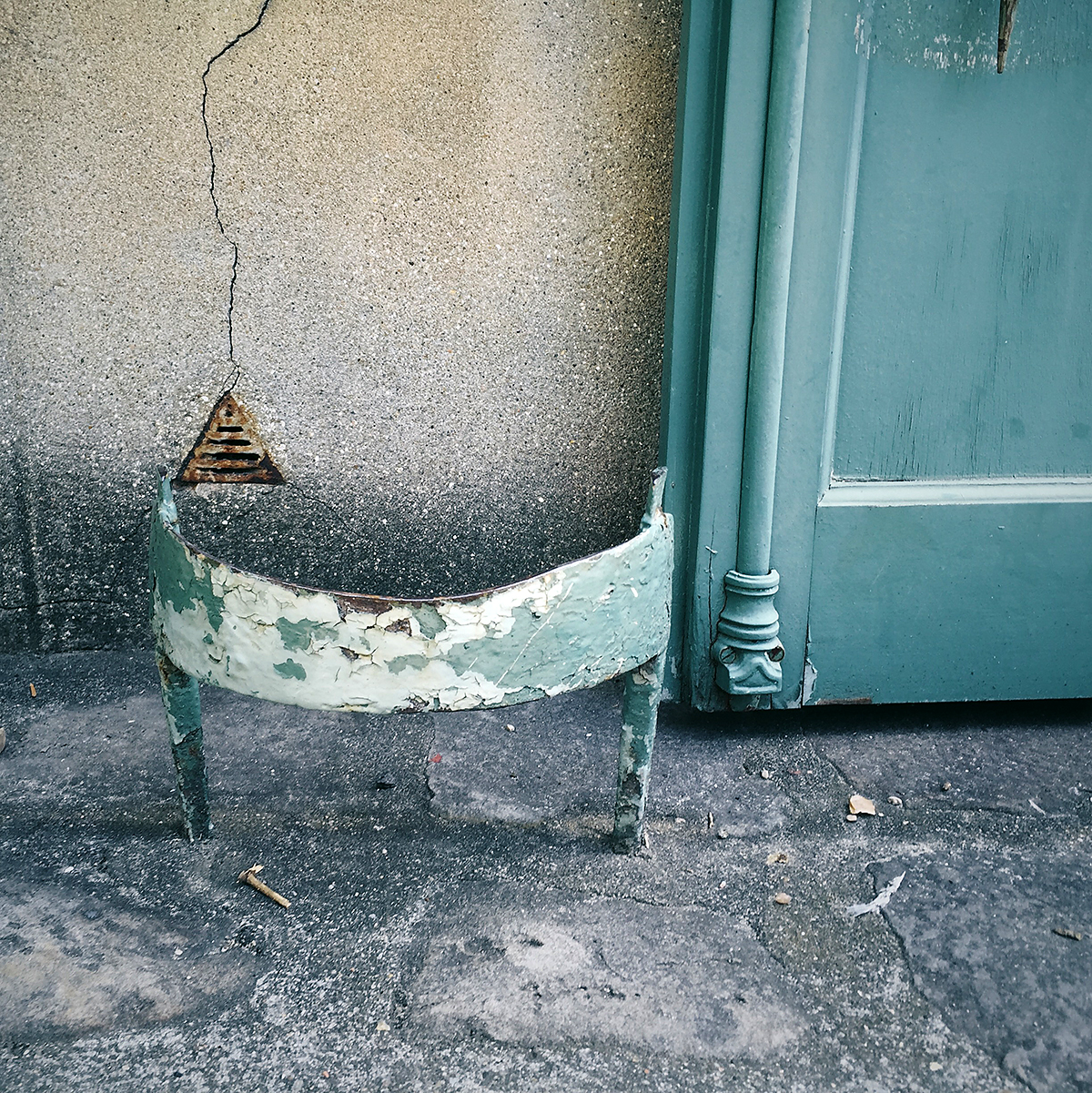
There are only two ways of presenting Balzac – one tries to make him appear like a normal human being, or one revels in the grandiose, grotesque, larger-than-lifeness of his physiognomy and character. Enrico Baj (and Rodin and Picasso, but not Nadar) belongs to the latter school
The Maison de Balzac also features the first bootscraper (décrottoir) we noticed in Paris.
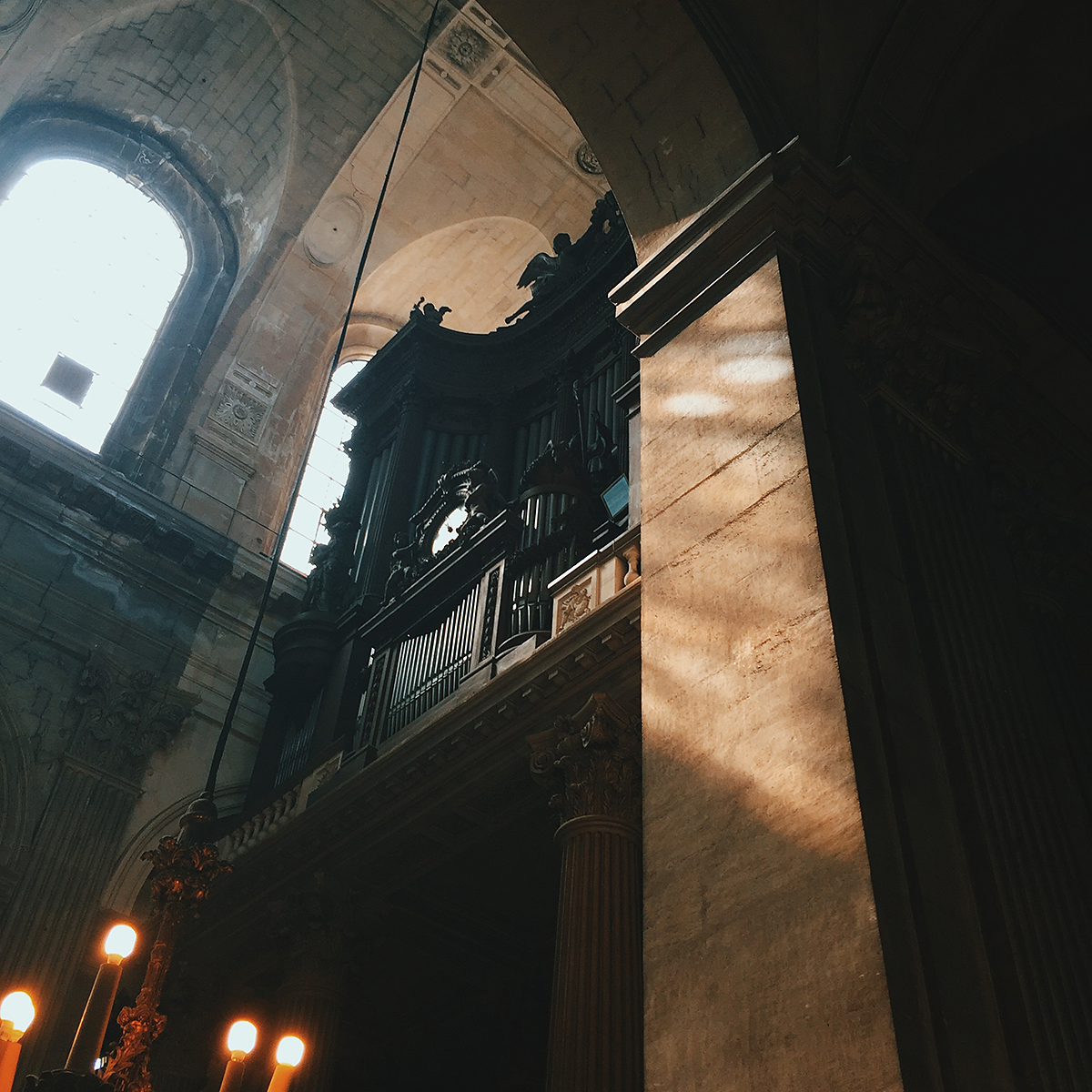
No day would be complete without a walk, so we walked back from the Balzac house, across the pont de Bir-Hakeim where several couples were having their wedding photos taken so as to feature that dreadful tower, and up to the 17th-century church of Saint Sulpice, which as you can see has a great organ. It also has a gnomon, but I didn’t find that out until later and so didn’t pay any attention to the obelisk in the corner. One doesn’t, does one?
Saint Sulpice also had a bootscraper. As one can easily suffer a surfeit of such photos, I have posted it over on Twitter, so it needn’t trouble you if you don’t care for such things.
15 September 2016 – Paris
15 September 2016, around 19.41.
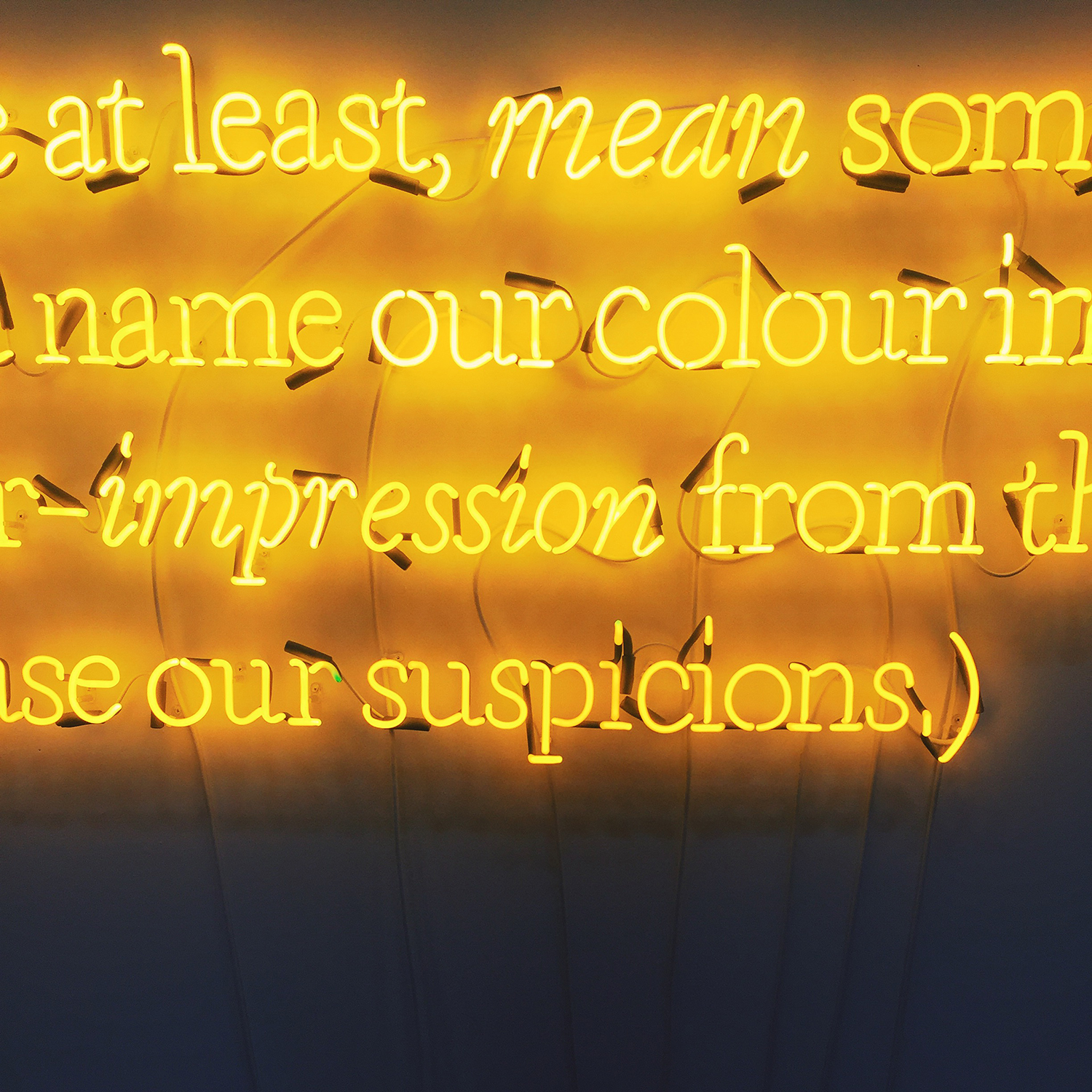
Day 9. We intended to climb the towers at Notre Dame today, and waited in line in the rain for some twenty minutes to find out there was a strike and the towers were shut. So we went to the Centre Pompidou and found we had arrived forty minutes too early. We wandered away to shelter from the rain in bookstores and cafés, and returned to ride the escalators and become overwhelmed by everything. · Text is from Wittgenstein’s ‘On Color’, as arranged by Joseph Kosuth. · It is pleasant to walk in the rain.
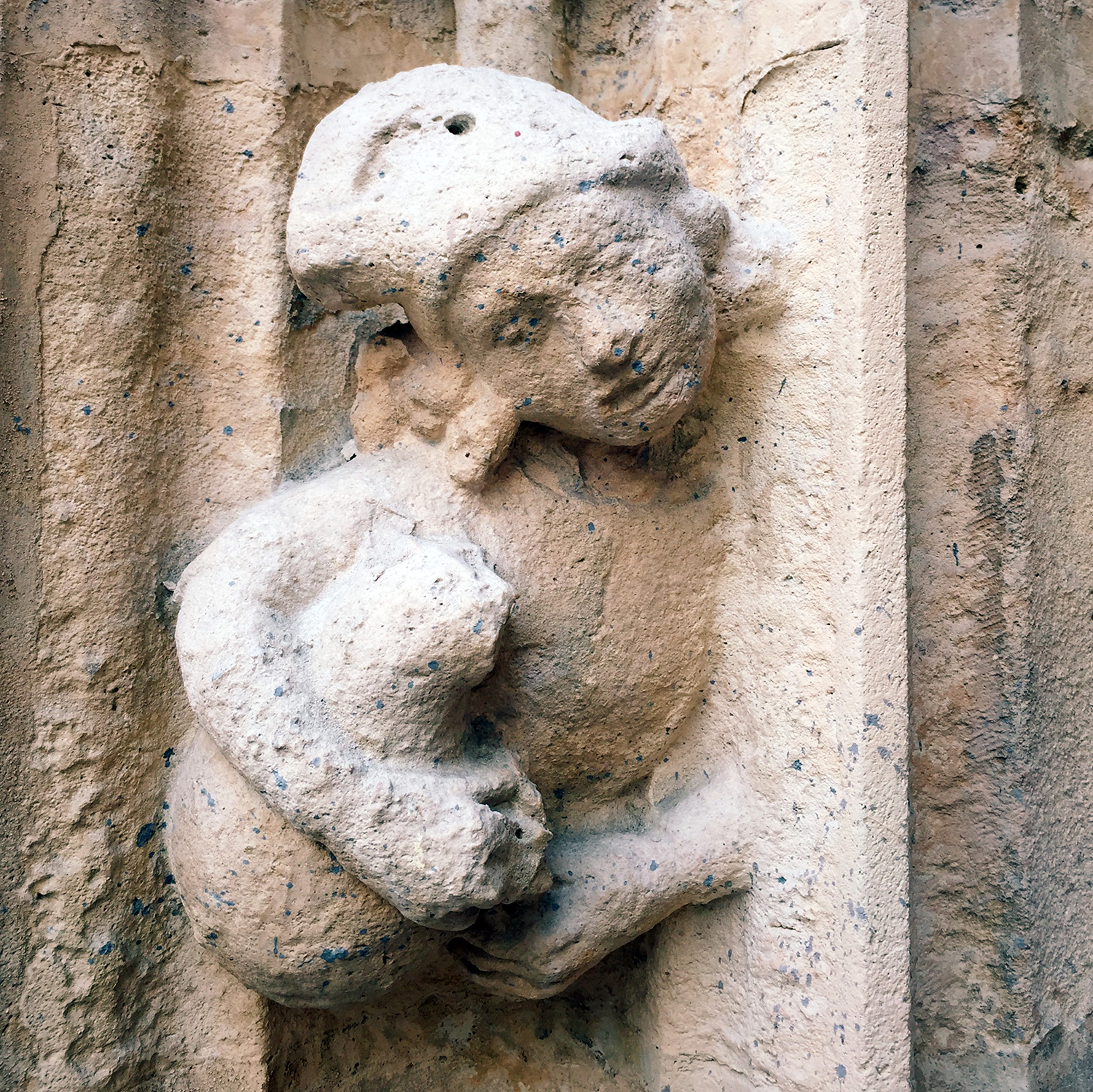
While looking to escape the rain, we tried to find entry into the church of Saint-Merri (Medericus). The doors and gates were shut and locked, though we could hear the faint sound of signing from inside. The door was open, though, when we passed again after visiting the Centre Pompidou – so we visited, catching the end of a service and also observing a sorting/mending of donated clothes. Many charming carvings, but all dusty, with a schoolroom feel – a church for use, not show.
16 September 2016 – Crézan
16 September 2016, around 19.41.
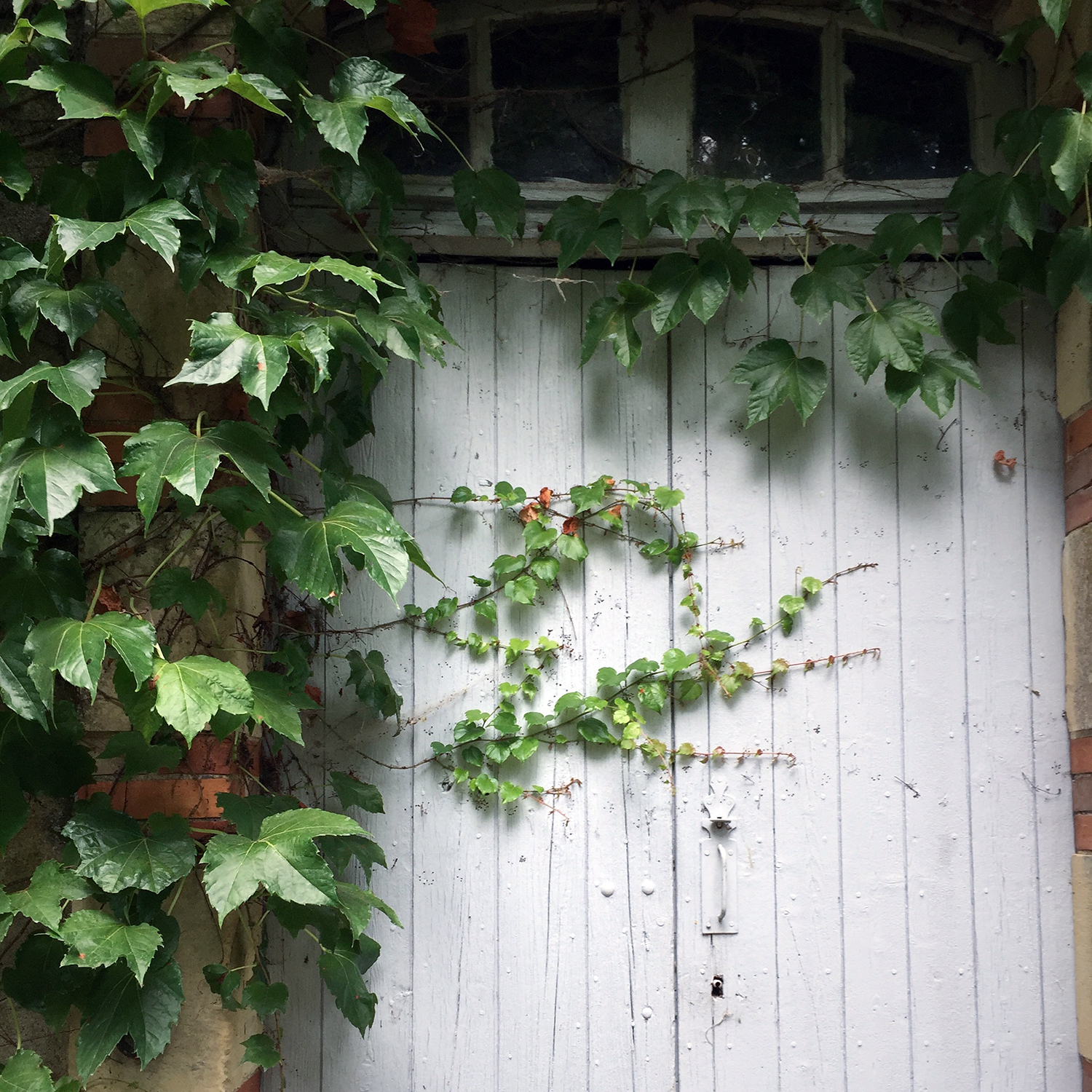
Day 10. And at last we have arrived. It is autumn – the haws are ripening and the cyclamen are blooming. We’ve taken our country walk and are ready to curl up with a book.
17 September 2016 – Bibracte
17 September 2016, around 19.43.
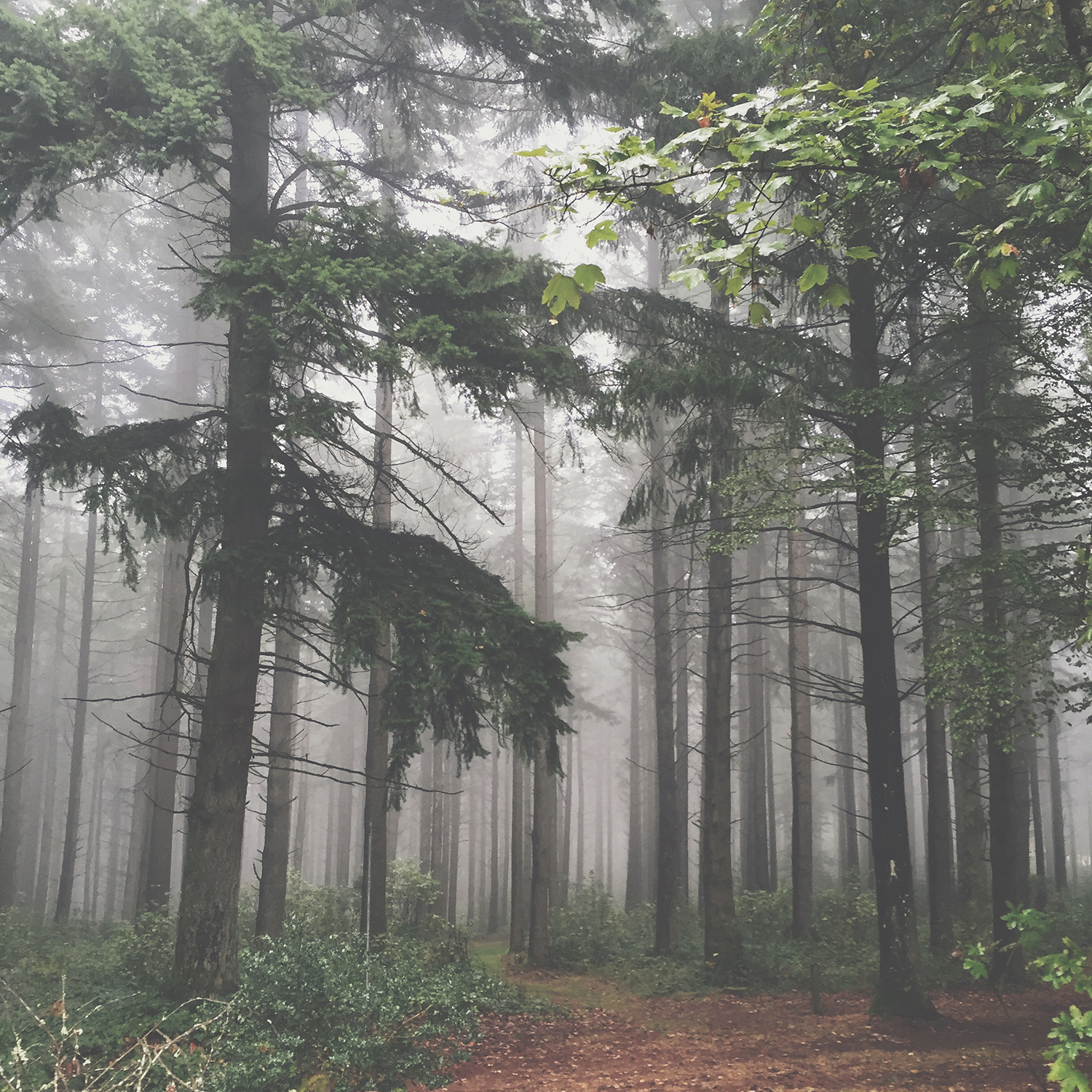
Day 11. Our first real ‘excursion’ – to the Gaulish site of Bibracte on Mont Beuvray in Burgundy. Abandoned after the Roman conquest of Gaul (in favor of the town of Autun, which some scholars had believed to be the site of the battle of Bibracte – where Caesar defeated the Helvetii in 58 BCE), it became a sort of wonderland for archaeologists – particularly those interested in Celtic fortifications. It could have been the constant mizzle, but the entire site had that eerie, timeless feel some places acquire. It reminded me, in many ways, of Butrint in southeast Albania – which had the same feeling – or Sounion, but I think that might have been because I had just read about that promontory in Hume.
If you get a chance to so to Bibracte, do sign up to try the ‘Gaulish’ meal – some of the best cabbage and mustard I’ve ever enjoyed.
19 September 2016 – Paris
19 September 2016, around 19.45.
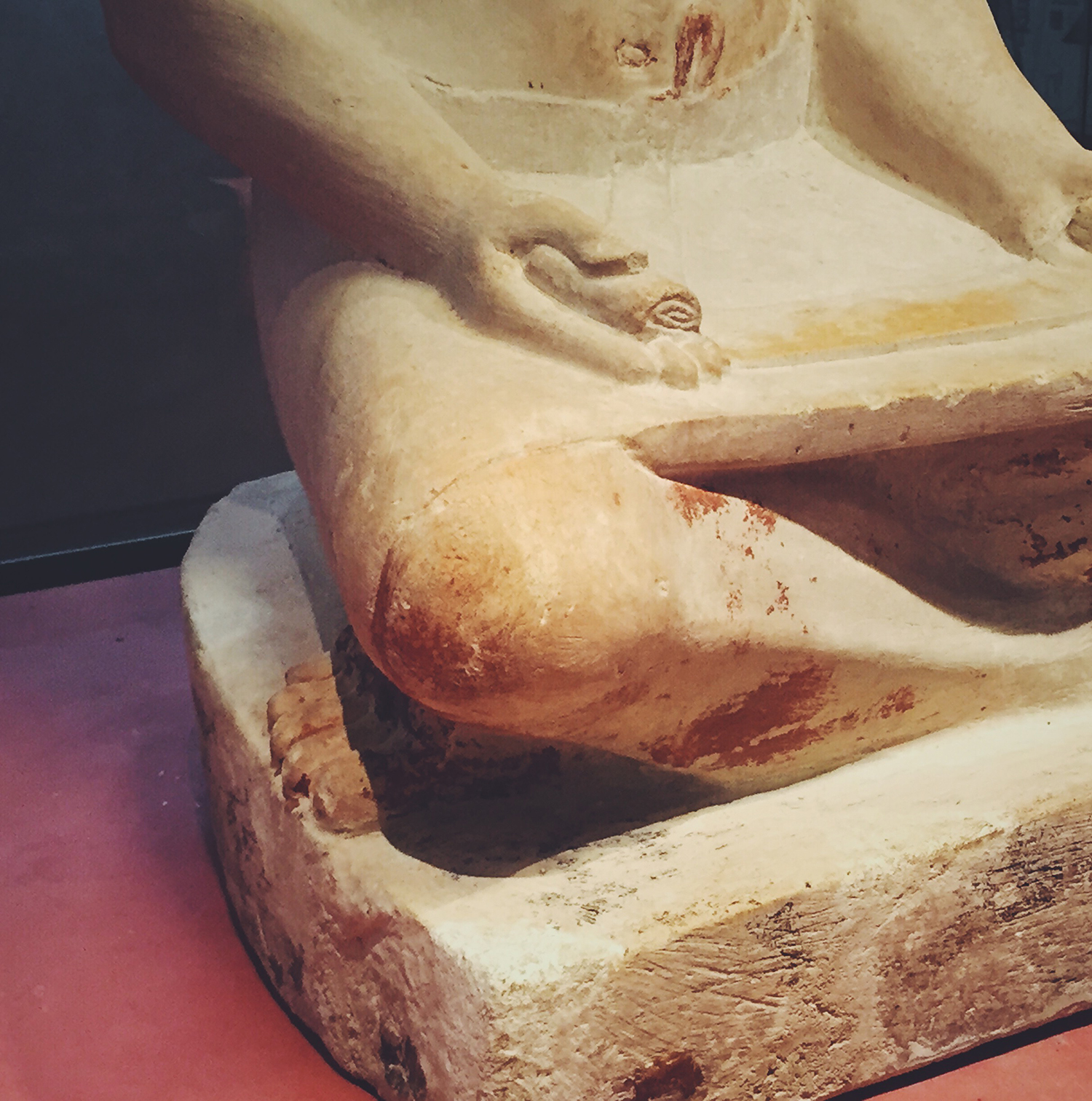
Day 13. Reached saturation level for museums today. All the busts of Antinous merged at last into the unattainable; the funerary reliefs of society ladies looked at eternity with boredom; the sirens and sphinxes on red figure vases bemused and befuddled and bewildered. In short, it was worth the 45-minute wait in the mizzle. · It is a very different museum from what it had been fifteen years ago, more crowded, more disorienting. 1 Πάντα ῥεῖ.
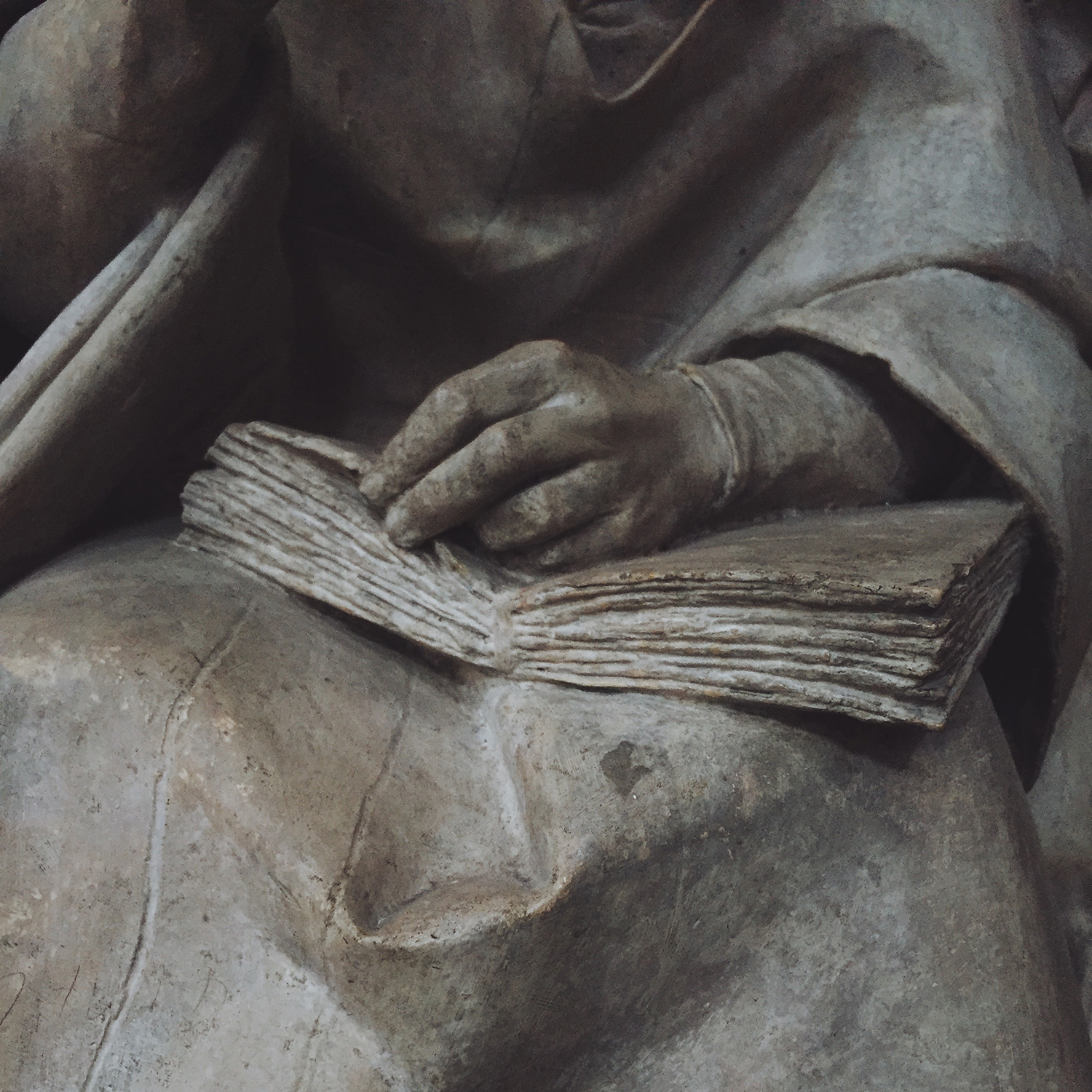
On the way back from the Louvre, we visited our last 16th/17th-century church: Saint-Eustache. We’ve admired the vaulted ceilings, the frescoes masked for repair, the brass lantern holders, and all the chairs and organs and moments of prayer.
We also stopped in again at Saint-Séverin to light a final candle – for thanksgiving, for gratitude, for symmetry.
We’ve checked in to our flight for tomorrow. We plan to spend the rest of the day listening to the city. Reading.
We are ready, I think, to return home.
- I visited on the same trip mentioned in the first posts on this site.[↩]
